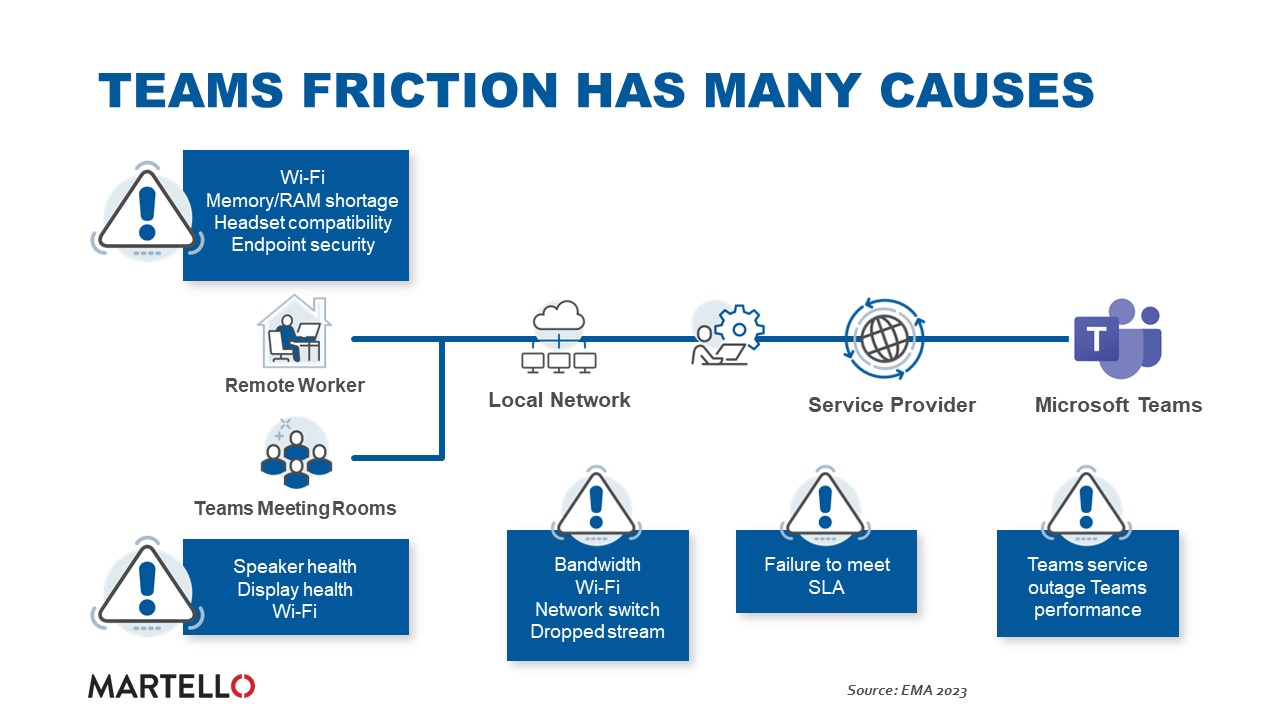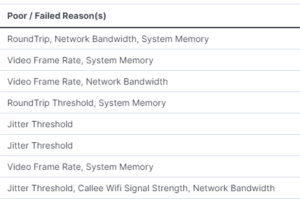Visibility is Critical to the Microsoft Teams User Experience
Microsoft Teams Monitoring
Martello bolsters end-to-end Microsoft Teams visibility with key endpoint performance metrics
In today’s digital work environment, the necessity for seamless connectivity cannot be overstated, with any disruption significantly impacting productivity. Microsoft Teams has emerged as the most impactful application on a user’s day-to-day work life. According to Okta, the authentication vendor, Microsoft 365 and Microsoft Teams is the #1 application across enterprises. Unlike role-specific applications like Salesforce or Atlassian, which cater to particular departments, Teams spans across enterprises, impacting the full breadth of roles within.
Microsoft Teams: Impactful but Also Challenging
For IT teams, ensuring a frictionless experience on Teams is paramount for productivity. However, many are entrenched in a reactive stance, often scrambling in firefighting mode due to limited visibility. Native tools such as the Microsoft Call Quality Dashboard are a good starting point giving visibility to the quality of individual calls and meetings. But this provides insufficient insight, leading to manual, tedious investigations with resolution times measured in days, weeks, or ending with no resolution at all. Teams friction symptoms like poor video and audio quality, difficulty connecting, or screen sharing troubles are telltale signs of underlying issues.
Factors Impacting Teams User Experience
Supporting Microsoft Teams is complex, with many interwoven factors that can degrade the quality of calls or meetings, thus driving up operational costs and devouring IT time that could be spent on innovation.

The communication chain from the user to the Microsoft Teams data center is long and fraught with potential pitfalls:
- Remote User: Factors like poor Wi-Fi signal strength, endpoint memory or CPU shortages or headset incompatibility.
- Teams Meeting Rooms: conferencing equipment that needs to have its software updated, or simply has been disconnected, and bandwidth limitations.
- Local Network: Bandwidth limitations, faulty network switches, and dropped streams.
- Service Provider Network: Service level agreements unmet due to issues similar to those found in the local network.
- Microsoft Teams Data Center: Instances of service outages or performance degradation.
Another challenge for IT teams is that often times they don’t even know if there are problems, since only around 16% of users report problems, leading to a skewed IT perception of service quality.
So how do you gain visibility of all these sources of Teams issues?
End-to-End Visibility is Essential to Fast Resolution Times & Strong User Experiences
Martello’s Vantage DX can help you achieve just that. We give you end-to-end visibility from the user right to the Microsoft data center capturing user experience data and network path tracing so we can identify problems anywhere they may occur.


Providing 24/7 monitoring and alerting, Vantage DX delivers enhanced visibility into these sources of potential problems. With our latest release of version 3.15, Vantage DX now includes endpoint metrics such as CPU and memory usage. These metrics, correlated with call quality and network data, empower IT teams to quickly diagnose and resolve issues. This visibility diminishes the often trial-and-error-based or manual approach to trouble-shooting, slashing operational costs and decreasing the productivity losses that come from poor Teams experiences.
To learn more about Vantage DX and how it can help you to better manage Teams user experience, visit our Vantage DX webpage or book a call with our team to see how we can help.


